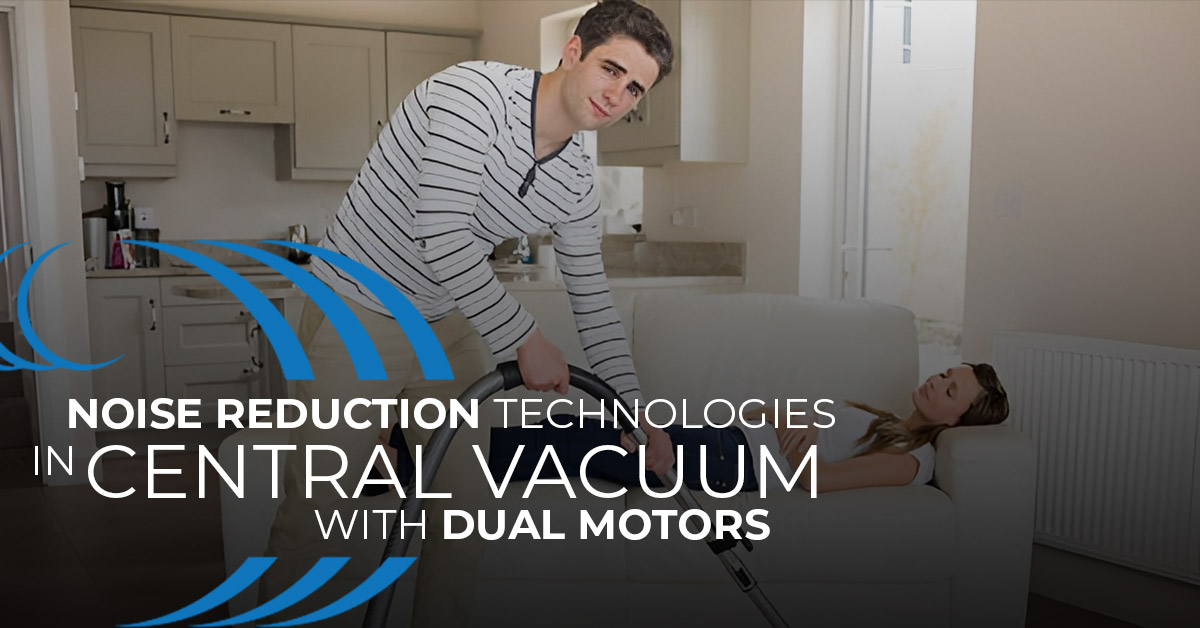
Boosting Productivity in Office Buildings with Central Vacuum
In today’s fast-paced work environment, maintaining a clean and organized office space is crucial for productivity. Office buildings often struggle with keeping their premises clean

When it comes to selecting a central vacuum system, homeowners often weigh a variety of factors, with noise level being a crucial one. This becomes particularly true for systems equipped with dual motors, known for their increased power and, consequently, their potential for greater noise output. This comprehensive analysis aims to illuminate the various sound reduction technologies incorporated in dual motor central vacuum systems.
Known for their superior cleaning capabilities, dual motor central vacuum systems naturally produce more noise due to their enhanced power. To counteract this, manufacturers have devised ingenious solutions integrating various noise reduction technologies into the design of these systems.
These technologies often include the use of mufflers or silencers. These are specially designed components attached to the exhaust of the power unit, serving to reduce the noise produced by the motor system. Another effective method for soundproofing and reducing noise levels involves enclosing the system within a four-sided acoustic blanket enclosure mounted on the floor.
A growing number of central vacuum brands are prioritizing the development of systems that come equipped with quiet technology. Some models, for instance, feature advanced sound-dampening technology that significantly reduces operational noise.
These systems utilize innovative design elements and materials that limit vibrations and muffle sound. Additionally, they strategically position the motor units in less frequented areas of the home. By placing these units in locations like the basement or garage, the noise disturbance in living spaces is minimized.
Beyond the built-in noise reduction features, several techniques can further mitigate the noise output of dual motor central vacuums. One common strategy involves installing the power unit in a remote location, away from the primary living areas.
Another approach involves the use of insulated pipes and flexible connectors. These components serve to absorb vibrations and reduce noise transmission. Some homeowners also choose to house their central vacuum power unit within a specially insulated cabinet or closet, adding another layer of sound dampening.
Regular maintenance plays a critical role in ensuring the quiet operation of dual motor central vacuum systems. Keeping the motor clean, ensuring the belt drive is in good condition, and checking for loose or damaged fans can all help prevent loud or unusual noises. Regularly replacing filters and emptying the dust bag or canister can also contribute to maintaining optimal noise levels.
Before purchasing a dual motor central vacuum system, it’s recommended to experience an in-store demonstration. This allows prospective buyers to hear the system’s noise level firsthand. It also provides an opportunity to ask the sales representative about the specific noise reduction features of different models.
Technological advancements continue to push the boundaries of what’s possible in terms of quiet operation for dual motor central vacuum systems. Future models may incorporate even more advanced sound-dampening materials and design innovations. As technology continues to evolve, homeowners can expect to enjoy increasingly quiet operation from their central vacuum systems.
In conclusion, achieving quieter operation in dual motor central vacuum systems is feasible with the right technology, techniques, and regular maintenance. By selecting a system designed with noise reduction features and employing sound reduction methods, homeowners can enjoy the powerful cleaning capabilities of these systems without the disruption of excessive noise.

In today’s fast-paced work environment, maintaining a clean and organized office space is crucial for productivity. Office buildings often struggle with keeping their premises clean

Central vacuums in animal shelters & vet clinic: Explore how these systems boost hygiene, efficiency, and air quality.

In the world of home entertainment, a home theater is a luxury that many homeowners dream of. It’s an immersive experience that brings the magic

A central vacuum system is a significant investment that promises convenience, powerful suction, and improved indoor air quality. However, choosing the right central vacuum hose
Our home automation products are at the forefront of technology, offering a blend of convenience, security, and efficiency. As a Homewave dealer, you’ll be part of a network transforming homes into smart, futuristic spaces.
Embark on this rewarding journey with us and leverage the power of innovative technology.
Please fill out this form and become a Homewave Dealer.